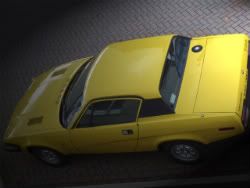I'm having heat problems and I'm looking for opinions. My previous 7 never ran above the halfway mark on the temp gage. My current 7 runs above half as a matter of course,and goes up to 3/4 when revving above 3000 rpm for any length of time.
Using the 'search' function, I've read and tried the following:
Cleaned the contact on the sensor.
Removed and tested the thermostat.
Changed out the radiator for a new one I had in the garage (don't ask).
Bypassed the heater matrix.
Flushed out the block. When I did this, I found one of the passageways completely blocked with corrosion. Aha! I thought; I've found my trouble. I managed to clear the passageway and run water through, seemingly with no other problems.
When I hooked everything back up, the temperature was actually running higher. I disconnected all hoses and ran water through the block again, in both directions, thinking that maybe some of the rust had blocked up somewhere else. It is now running pretty much as it was before, maybe slightly cooler.
I'm wondering if my water pump is not working properly, perhaps blocked up with some rust? What are the symptoms of a failing water pump? Do they die slowly, or give up their labours in a single spectacular event? What other things might be causing my engine to run hot? I replaced most of the rad hoses, but haven't replaced the lower one yet. It is a bit soft and has a 120V heater fitted about mid-span. (This is Canada, eh?)Or is the corrosion I loosened still hiding somewhere in the recesses of the engine? The car sat in field under a tarp for 10 years and was last driven in 2004, so it has had a long period of inactivity.
Any ideas would be appreciated.




